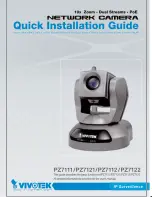
Cisco EtherSwitch Service Modules Feature Guide
Information About the Cisco EtherSwitch Service Modules
13
Cisco IOS Release 12.2(25)SEC
A
switch stack
is a set of Cisco EtherSwitch service modules or Catalyst 3750 switches connected
through their Cisco StackWise ports. One of the Cisco EtherSwitch service modules or one of the
Catalyst 3750 switches controls the operation of the stack and is called the
stack master
. The stack
master and the other Cisco EtherSwitch service modules or Catalyst 3750 switches in the stack are
stack
members
. The stack members use the Cisco StackWise technology to behave and work together as a
unified system. Layer 2 and Layer 3 protocols present the entire switch stack as a single entity to the
network.
The stack master is the single point of stack-wide management. From the stack master, you configure:
•
System-level (global) features that apply to all stack members
•
Interface-level features for each stack member
A switch stack is identified in the network by its
bridge ID
and, if the switch stack is operating as a
Layer 3 device, its router MAC address. The bridge ID and router MAC address are determined by the
MAC address of the stack master. Every stack member is uniquely identified by its own
stack member
number
.
All stack members are eligible stack masters. If the stack master becomes unavailable, the remaining
stack members participate in electing a new stack master from among themselves. A set of factors
determine which Cisco EtherSwitch service module or Catalyst 3750 switch is elected the stack master.
One of the factors is the
stack member priority value
. The internal interface with the highest-priority
value becomes the stack master.
Note
The system-level features supported on the stack master are supported on the entire switch stack. If the
switch stack must have Cisco EtherSwitch service modules or Catalyst 3750 switches running both IP
base image and IP services image, we recommend that a member running the IP services image be the
stack master. IP services image features are unavailable if the stack master is running the IP base image.
Similarly, we recommend that a Cisco EtherSwitch service module or Catalyst 3750 switch running the
cryptographic version of the IP base image or IP services image be the stack master. Encryption features
are unavailable if the stack master is running the noncryptographic version of the IP base image or IP
services image.
The stack master contains the saved and running configuration files for the switch stack. The
configuration files include the system-level settings for the switch stack and the interface-level settings
for each stack member. Each stack member has a current copy of these files for backup purposes.
You manage the switch stack through a single IP address. The IP address is a system-level setting and is
not specific to the stack master or to any other stack member. You can manage the stack through the same
IP address even if you remove the stack master or any other stack member from the stack.
You can use these methods to manage switch stacks:
•
Using the command-line interface (CLI) and the
session
command
•
Using a network management application through Simple Network Management Protocol (SNMP)
•
Using the CiscoWorks network management software
Switch Stack Membership
A switch stack has up to nine stack members connected through their StackWise ports. A switch stack
always has one stack master.













































